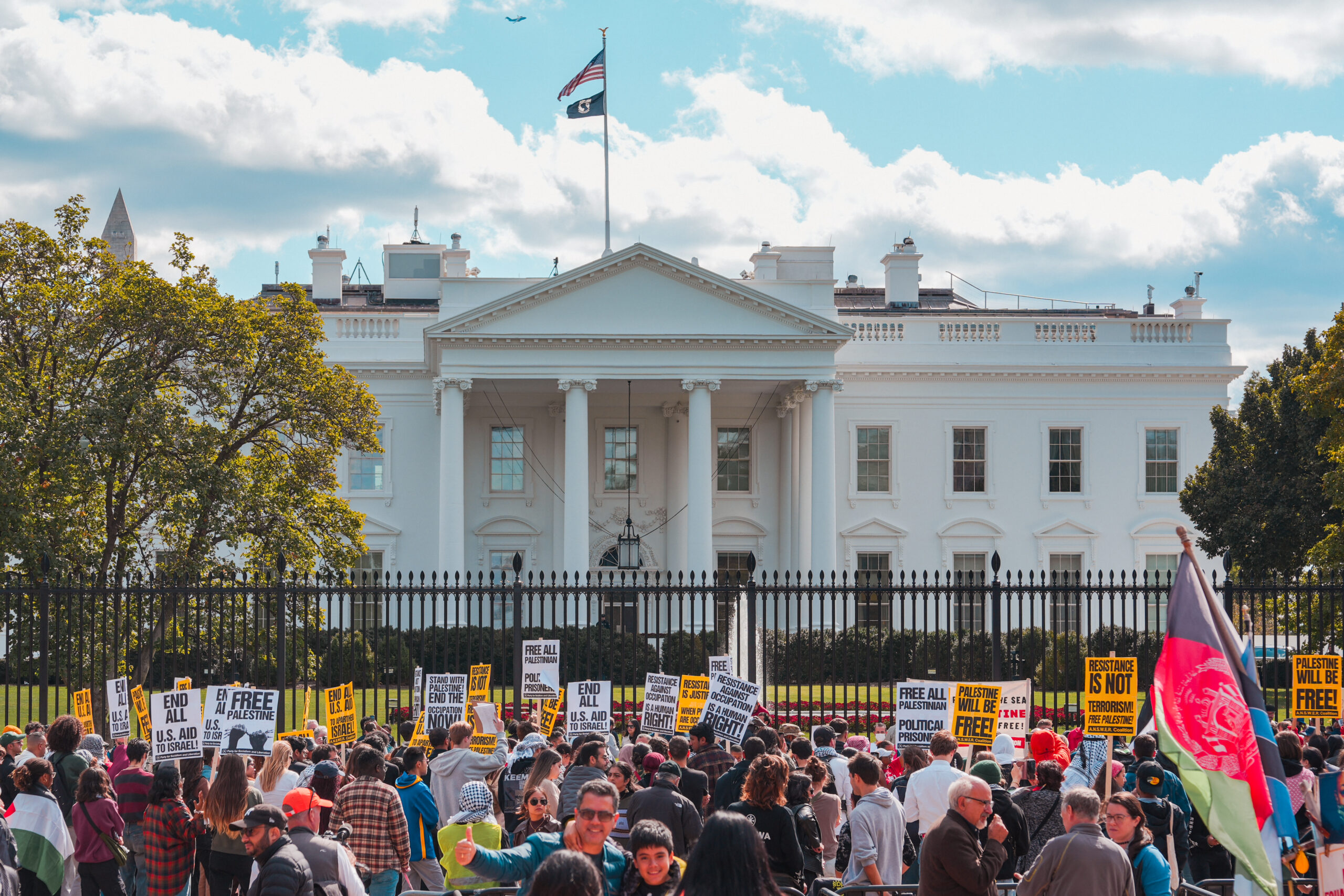Staff writer Mehmet Temur discusses the centrality of microchip production to the US-China geopolitical feud.
The US-China chip race has emerged as a critical battleground in the escalating tensions between the two major superpowers and could have significant implications for a potential invasion of Taiwan. Moreover, recent developments such as the Biden administration’s imposition of sanctions on the industry have highlighted the importance of this conflict, sparking the question of whether the humanity is facing another arms race, this time for chips.
The Competition for Production
Semiconductors, also known as microchips, are an indispensable component of virtually every electronic device in today’s world. Currently, the United States holds a dominant position in semiconductor design, while Taiwan is the key player in manufacturing. Taiwan Semiconductor Manufacturing Company (TSMC) alone accounts for 50 to 70 per cent of global microchip production and a staggering 95 per cent of advanced microchip production. These microchips are primarily exported to China, which represents approximately 45 per cent of global demand due to its position as the world’s factory.
Despite some involvement from Chinese manufacturers, China still relies on imports for about 70 per cent of its semiconductor needs. The Chinese government perceives this reliance as a vulnerability, as it exposes them to potential foreign interference. China’s response to this threat was the “Made in China 2025” plan, unveiled in 2015, which aimed to achieve self-sufficiency in strategically important industries, including the microchip industry. The plan involved substantial investment in companies such as China’s Semiconductor Manufacturing International Corporation (SMIC) and the national integrated circuits industry.
While complete self-sufficiency in advanced semiconductors may be unattainable for any country, China has made notable progress in reducing its dependence on foreign sources. SMIC, for instance, has shown impressive advancements in chip designs, reportedly developing a seven-nanometre chip, one of the most advanced designs available. However, these efforts have raised eyebrows in the United States, not only because China’s dependence on American semiconductor designs is a significant leverage for the US which it will not be eager to dispense with but also due to fears that China’s push for onshoring its semiconductor industry is a precursor to a potential invasion of Taiwan.
US Sanctions and Export Controls
The Trump administration initially responded by calling for increased purchases of American semiconductors by China. However, this policy was short-lived. In 2019 the administration imposed restrictions on the export of American semiconductors to Huawei, a Chinese company indicted for various violations of international sanctions and stealing intellectual property by the US and several other countries. The measures aimed to prevent the sale of American technology to Chinese chip makers. Subsequently, further export controls were introduced in 2020, known as the Foreign Produced Direct Product (FDPP) rule, prohibiting foreign companies dealing with Huawei from buying American-made technology.
The Biden administration has gone further, believing that these sanctions were insufficient. They announced new export controls, banning the export of specific specialised chips and high-end manufacturing to China. Notably, American citizens are now prohibited from working in China’s semiconductor industry. These measures are based on the Export Control Reform Act of 2018 (ECRA), which prohibits US individuals from participating in foreign countries’ nuclear and military intelligence projects. The White House now considers China’s semiconductor industry as part of its broader military program, meaning that any American working in the industry may face severe criminal penalties.
These stringent sanctions have triggered mass resignations of US citizens working in China’s semiconductor industry and drawn intense criticism from both the Chinese chip industry and the Chinese government. China accuses the US of technological hegemony and violating World Trade Organization (WTO) rules. It is important to note that these sanctions deviate from the norm, as they target individuals rather than specific companies and explicitly aim to hinder China’s technological progress rather than merely protect American companies. However, these sanctions may also have unintended negative consequences for American companies involved in the semiconductor industry, as a significant portion of their products is exported to China.
The impact of these sanctions remains subject to debate. While China’s progress in semiconductor technology could be significantly slowed, it is unlikely to be halted entirely. The country may resort to alternative means to bridge the technological gap, such as increased investments in research and development, attracting talent from other countries and partnerships with semiconductor companies in Europe, Japan and South Korea. Moreover, China’s strong domestic market will continue to drive demand for semiconductors, ensuring it remains a critical player in the global semiconductor industry.
The Geopolitical Struggle
The US-China chip race fits into a broader strategy aimed at hindering Beijing’s preparations for a potential invasion of Taiwan. The United States recognises that it is important to maintain a military advantage in the Taiwan Strait if it wants to protect its aims of safeguarding regional stability and countering China’s aggressive territorial claims. By limiting China’s technological progress, especially in semiconductors, the US aims to disrupt China’s military modernisation efforts and maintain a balance of power in the region. The reasoning is most likely due to the fact that semiconductors are essential for the production of numerous military hardware, so much so that, after the sanctions imposed on them due to the war in Ukraine, Russia had to resort to importing electronic appliances and using the chips inside them to build missiles.
The timing of these measures is significant, as the US anticipates that China’s military advantage in the Taiwan Strait will diminish after 2027 when new US military technologies, such as hypersonic weapons and advanced stealth systems, become available. Delaying China’s self-sufficiency in semiconductors could serve as a deterrent until then.
Many times in history, geopolitical rivals have had a race to produce more of the defining technologies of the era to have the upper hand in a conflict: the First World War was characterised by the naval race, and the Cold War by the nuclear arms race. Similarly, the outcome of the ‘chip race’ could shape contemporary geopolitics and have substantial effects on the technological landscape, regional security dynamics, and international trade and cooperation. As tensions continue to escalate, it is crucial for both sides to navigate this conflict carefully to avoid unintended consequences and maintain stability in an increasingly interconnected world.

















